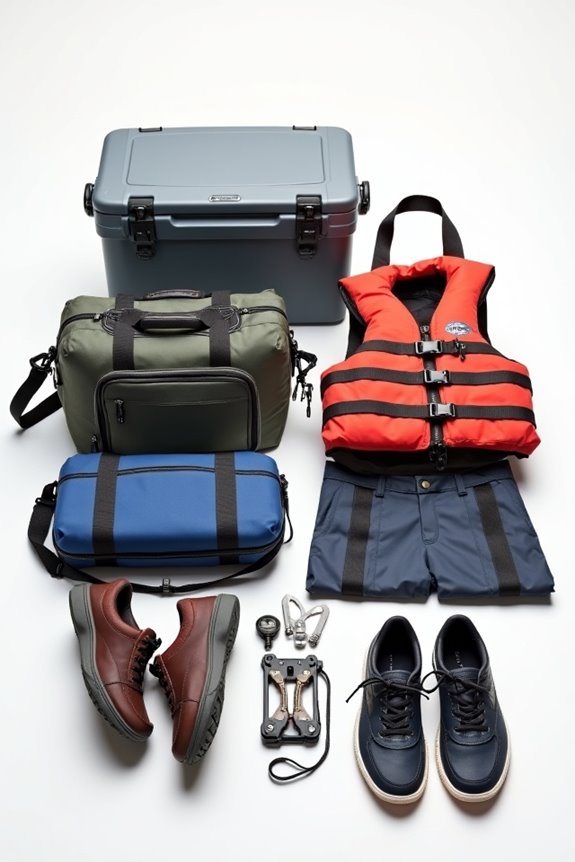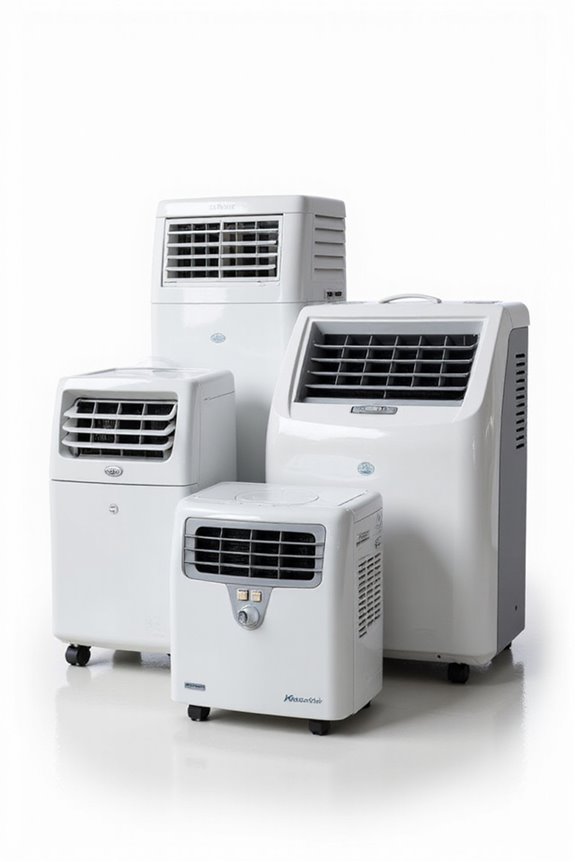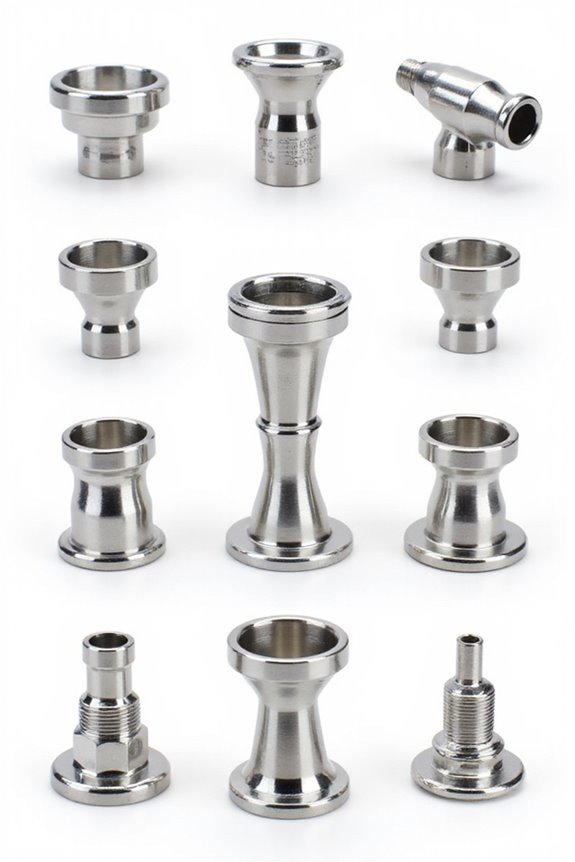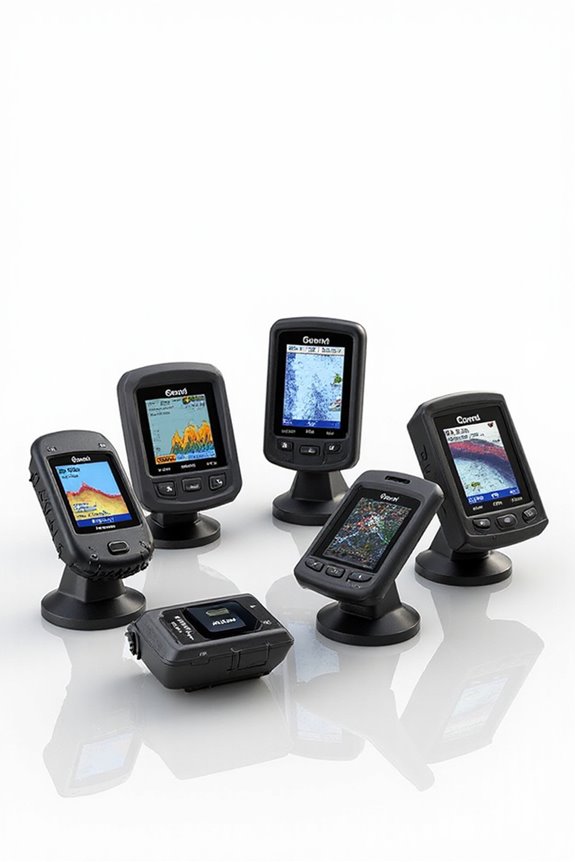As an Amazon Associate, we earn from qualifying purchases. Some links may be affiliate links at no extra cost to you. Although our opinions are based on curated research, we haven't used these products. Articles generated with AI.
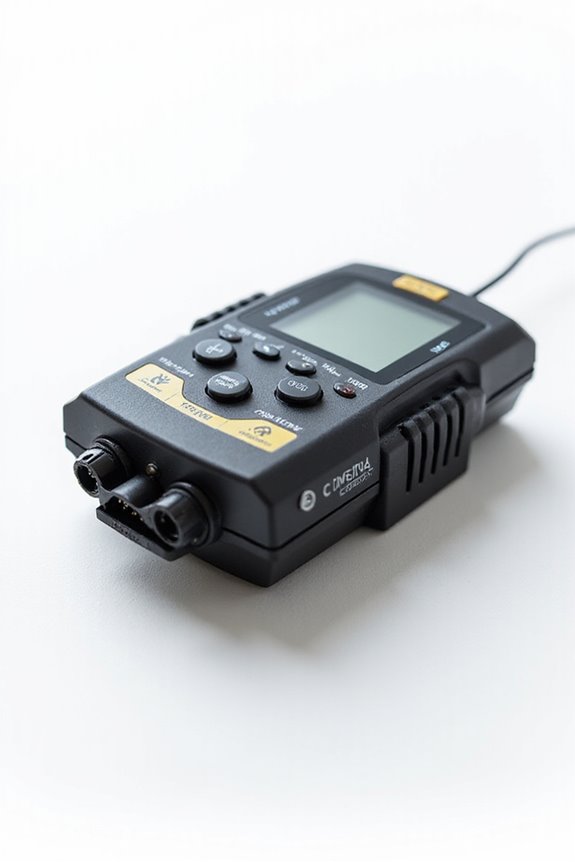
The 5 Best AIS Class B Transponders of 2025 – Comprehensive Reviews & Buying Guide
Searching for the best AIS Class B transponders in 2025? You’re in luck! The MDA-1 offers four interfaces and a built-in GPS, while the Racing Transponder is lightweight and battery-friendly. Don’t forget the EM-TRAK NF-189, just launched this year! Plus, if you need a replacement, the 1800mAh battery for ICOM radios is exceptional. With these options, there’s something for everyone. Stick around, and you’ll uncover even more helpful tips to make an informed decision!
Key Takeaways
- The MDA-1 AIS Class B offers reliable performance with four interfaces and an internal GPS antenna for easy installation and vessel tracking.
- The EM-TRAK NF-189 B921 combines compact design and durability, powered by 12/24 volts, with warranty support for peace of mind.
- NMEA compatibility is crucial for AIS transponders, allowing real-time data sharing for enhanced navigational safety.
- User-friendly interfaces and internal GPS capabilities improve vessel tracking and compliance with maritime regulations.
- Consider warranty duration and customer support quality when selecting an AIS Class B transponder to ensure longevity and reliability.
MDA-1 AIS Class B with Four Interfaces, GPS
Si-tex MDA-1 AIS Class B with Four Interfaces, GPS
- Metadata AIS
- Class B transceiver
- Receives and sends AIS data
If you’re on the lookout for an AIS Class B transponder that really delivers, the MDA-1 might just be your new best friend. It features four interfaces and packs an internal GPS antenna, helping you send and receive essential AIS data effortlessly. Envision this: maneuvering while seeing other vessels’ positions, speeds, and courses on your chartplotter or radar. It’s like having a digital buddy keeping you safe on the water! While it isn’t the lightest option at around 1.6 pounds, users rave about its reliability and performance, especially on long voyages. So, are you ready to upgrade?
Best For: The MDA-1 AIS Class B is best for maritime enthusiasts and professional sailors seeking reliable AIS functionality for enhanced navigation safety.
Pros:
- Reliable Performance: Users report consistent performance and reliability, even on long voyages.
- Effective Vessels Tracking: Displays other vessels’ positions, speeds, and courses on chartplotters or radars, enhancing situational awareness.
- Multiple Interfaces: Features four interfaces, allowing for easy integration with existing marine electronics.
Cons:
- Weight: At 1.6 pounds, it may not be the lightest option for all boat setups.
- Average Customer Rating: Holds a 3.5 out of 5 stars rating, indicating mixed feedback from some users.
- Limited Warranty: Comes with only a 1-year limited warranty, which may not be sufficient for all users.
Transponder Package w/ Mnt. Pouch & ChargerF
Transponder Package w/ Mnt. Pouch & ChargerF
- The transponders are light, compact devices attached to each vehicle.
- Each transponder is assigned a unique identification number to differentiate individual vehicles.
- As the vehicle passes over the Loop Antenna, the Decoder reads this identification number and determines a crossing time.
Looking for a reliable transponder that can keep up with your motocross adventures? The Transponder Package w/ Mnt. Pouch & ChargerF is designed just for you. This rechargeable unit transmits signals 1,000 times per second, ensuring your every move gets tracked with pinpoint accuracy. You won’t have to worry about charging it often, as it lasts up to seven days. Plus, the fast recharge time means you’re back in action in just an hour! The clear window on its pouch lets you see LED indicators, so you can keep an eye on battery life. Ready to race?
Best For: Motocross enthusiasts looking for a high-performance transponder that provides precise tracking during races.
Pros:
- Fast recharge time of just 1 hour allows for minimal downtime between uses.
- Long battery life of up to 7 days ensures consistent performance throughout race events.
- Clear visibility of battery indicators through the pouch window keeps you informed about remaining charge.
Cons:
- The transponder’s size (8.4 x 7.3 x 2.5 inches) may be bulky for some users.
- Limited compatibility, only suitable for G3 Car, G3 Kart, and G3 MX transponders.
- Charging requires a specific cradle, which might not be included in all packages.
Transponder with Charger and Mount Kit Racing Transponder
Transponder with Charger and Mount Kit Racing Transponder
- Raceceiver Transponder Package
- Includes: Rechargeable Transponder, Charging Unit, and Mount
- Transmitter has convenient LED Indicator for Operation Status
The Transponder with Charger and Mount Kit Racing Transponder is an ideal choice for avid racing enthusiasts who want a reliable, easy-to-use tracking solution. Weighing only a pound, this compact unit comes with a rechargeable transponder and a charging unit, ensuring you’re always ready to race. The LED indicator gives you a quick way to check the operation status—no more guesswork! With its mount, installation is a breeze. Plus, if you’re concerned about quality, remember it’s backed by Amazon’s 30-day return policy. Why settle for less? Gear up and track your performance like a pro!
Best For: Racing enthusiasts looking for a reliable and easy-to-use tracking solution for their RC vehicles.
Pros:
- Compact and lightweight design for easy integration with various RC setups.
- Rechargeable transponder ensures you are always ready to compete without needing to worry about battery replacements.
- LED indicator provides clear feedback on operational status, eliminating guesswork.
Cons:
- Best sellers rank suggests limited popularity compared to other products, which may raise concerns about market reception.
- Return policy limited to 30 days, which may not be sufficient for some users to fully test the product.
- Price feedback option may indicate potential pricing variability, which could affect long-term value.
1800mAh Replacement Battery for ICOM Radios
GoodQbuy 1800mAh Replacement Two-Way Radio Battery Packs BP-209 BP-210 BP-222 BP-209N BP-210N...
- Replacement Battery Pack For ICOM Radio
- 7.2V 1800mAh replacement rechargaeble battery, perfect replace your original batteries.
- Safety protection - Over-charge, over-discharge, over-heat, over-current & short-circuit protection
For those who rely on their ICOM radios to communicate effectively, a reliable battery is essential, and the 1800mAh Replacement Battery can be a game changer. This rechargeable powerhouse packs 7.2V of energy, ensuring you stay connected when it matters most. It’s compatible with various ICOM models, so you won’t have to fret about finding the right fit. Plus, it features built-in protections like over-charge and short-circuit safeguards, making it safer than a cat in a room full of rocking chairs. With a 30-day money-back guarantee, you can rest easy knowing you’re covered. Ready to keep talking?
Best For: Those who need a dependable and long-lasting battery for their ICOM radios to ensure uninterrupted communication in various settings.
Pros:
- Rechargeable battery with a capacity of 1800mAh, providing extended usage time.
- Wide compatibility with numerous ICOM models, making it a versatile choice.
- Built-in safety features protect against over-charge, over-discharge, and short circuits.
Cons:
- May not be compatible with non-ICOM radio models, limiting its use.
- Only available with a one-year limited warranty, which might be less comprehensive than some users expect.
- Requires proper charging guidelines to maintain battery health, which could be inconvenient for some users.
EM-TRAK NF-189 B921 AIS Transmitter/Receiver
EM_dash_TRAK Unisex Adult NF-189 B921-TRANSMISOR/RECEPTOR AIS CLASE B Marca EM-TRAK 2W ALIMENTACIÓN...
- Electronics, cold, communication and energy solutions
If you’re the type who loves sailing and values safety on the water, the EM-TRAK NF-189 B921 AIS Transmitter/Receiver might just be your new best mate. Weighing in at a solid 1.55 pounds and powered by 12/24 volts, this little gadget packs a 2W punch in a compact size. Made of durable plastic, it’s ready to brave the elements alongside you. With dimensions of 7.4 x 6.69 x 5.63 inches, it won’t crowd your vessel. Plus, it comes with a warranty, so you know it’s built to last. Ready to navigate safer? This could be your perfect sailing buddy!
Best For: Safety-conscious sailors looking for a reliable AIS transmitter/receiver to enhance navigation on the water.
Pros:
- Compact Size: Its dimensions make it easy to install on various vessels without taking up much space.
- Durable Material: Made from robust plastic, it can withstand harsh marine conditions.
- Warranty Included: Added peace of mind with a warranty ensuring product longevity.
Cons:
- Limited Power Output: At 2W, it may not be suitable for larger vessels requiring more robust communication.
- Heavier Than Some Alternatives: Weighing 1.55 pounds may be heavier compared to other AIS devices.
- Recent Market Entry: Being newly available since July 2023, it may lack extensive customer reviews or established reliability.
Factors to Consider When Choosing an Ais Class B Transponder
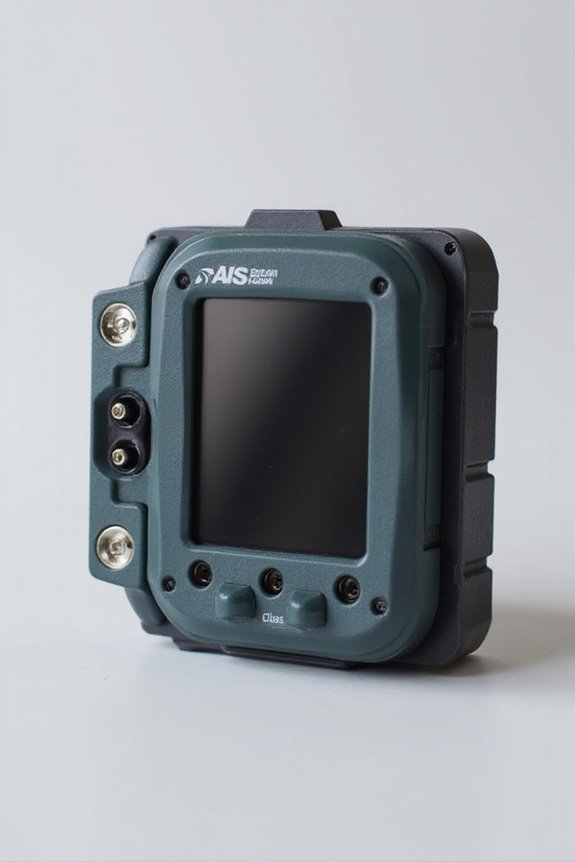
When you’re choosing an AIS Class B transponder, there are a few key factors that can really impact your decision. You’ll want to reflect on reliability and performance, compatibility with NMEA standards, and whether it has internal GPS capability—because who wants extra gadgets cluttering up their boat? Plus, don’t forget to evaluate the size and weight; you want something that fits nicely without feeling like you’re carrying a brick!
Reliability and Performance
Choosing an AIS Class B transponder can feel a bit like picking a life jacket—you want something reliable that will keep you safe on the water. Reliability matters because your transponder must consistently send and receive AIS data to maintain visibility, especially in busy waterways. Performance is often reflected in user reviews, so look for models celebrated for their smooth integration with other marine gear during long voyages. Internal GPS antennas can boost performance by providing accurate positioning, which is essential. And don’t forget a robust warranty and customer support—they can save you some serious headaches if something goes wrong. After all, who wants to dance with a malfunctioning device while steering through the open sea?
NMEA Compatibility
NMEA compatibility isn’t just a technical detail—it’s a critical factor that can make or break your AIS Class B transponder experience. You want your transponder to talk smoothly with other marine devices, right? There are two main NMEA versions: NMEA 0183 and NMEA 2000. Supporting at least one guarantees you integrate easily with existing equipment. NMEA 0183 uses a point-to-point connection, while NMEA 2000 lets multiple devices chat at once, making it a real multitasker! By guaranteeing compatibility, you’ll enjoy real-time data on position, speed, and heading, which boosts navigational safety. So, check that compatibility before you commit—nobody wants a transponder that won’t play nice with the rest of the crew!
Internal GPS Capability
A solid internal GPS capability in your AIS Class B transponder is a game changer! Imagine not having to deal with extra external GPS devices cluttering your boat. With internal GPS, you get accurate positioning data that boosts vessel tracking and navigation safety. Plus, it updates you in real-time on your location, speed, and course, keeping you informed as you navigate the waters. This feature enhances your situational awareness, letting you monitor nearby vessels and, hopefully, avoid any awkward collisions. And hey, nothing says you’re serious about compliance like having a transponder that meets international regulations! So, if you’re fishing for an upgrade, make sure internal GPS is on your list. The waters are calling!
Interface Options
While internal GPS boosts your navigation prowess, the interface options of your AIS Class B transponder can really make or break your experience on the water. You’ll want to take into account how many interfaces your transponder offers; more connections mean better compatibility with radar and chartplotters. Look for compatibility with NMEA 0183/2000 standards—this guarantees smooth communication with your other systems. You might appreciate an internal GPS antenna as it simplifies installation, right? Also, reflect on how user-friendly the interfaces are; nobody enjoys struggling with complicated setups. Finally, think about potential upgrades. Having flexible options can open doors to integrating newer tech down the line. After all, who wouldn’t want their gear to evolve with their adventures?
Size and Weight
When you’re picking out an AIS Class B transponder, size and weight aren’t just mere details—they’re essential factors that can make your boating experience smoother. You’ll want to take into account dimensions; with typical models around 7.76 x 6.54 x 4.57 inches, it’s important to check installation space. A compact design can save you from wrestling with a bulky transponder in tight areas. Plus, the weight matters—opt for lighter options, like those weighing as little as 1.6 lbs, especially if you’re on a smaller vessel. Every pound affects stability and performance, right? Ultimately, understanding these aspects will help guarantee you comply with regulations while enjoying efficient maritime navigation. So, don’t underestimate size and weight—they’re no small potatoes!
Warranty and Support
Choosing an AIS Class B transponder isn’t just about the device itself; it’s also about what comes with it—like warranties and support. You’ll want to check the warranty duration because longer ones often signal that the manufacturer believes in their product’s reliability. Make sure to look closely at what’s covered; limited warranties might only protect specific components or malfunctions. Also, don’t underestimate the value of customer support. A responsive support team can be a lifesaver when troubles arise. Did you know some warranties even cover accidental damage? That’s a nice bonus if your transponder faces the harsh realities of marine life. So, do your research, and make sure you’re covered before making a purchase!
Power Supply Requirements
Power supply requirements are a significant factor in your decision-making process, especially if you want your AIS Class B transponder to perform flawlessly. Most transponders operate on either 12V or 24V, fitting well with various vessel electrical systems. You’ll appreciate that many models only consume around 2W—pretty energy-efficient for continuous use, right? But don’t overlook stability; a reliable power supply is essential for consistent performance and data transmission. Some units even boast internal batteries for backup in case of power loss. When choosing your AIS Class B transponder, think about your vessel’s existing electrical setup. After all, you wouldn’t want your new tech to show up and say, “Sorry, I can’t connect!”
Price and Value
Finding the right price for your AIS Class B transponder can feel a bit like maneuvering through a maze, particularly with so many options available. Prices range from budget-friendly to high-end, so comparing features is vital for evaluating value. Don’t forget to check the warranty and customer support—after all, a longer warranty often signals that the manufacturer trusts their product’s durability. You also want to see if essential components, like installation hardware, come included in the price. Familiarize yourself with user ratings; higher-rated models typically offer better performance. Finally, keep an eye out for competitive pricing. Some manufacturers even encourage you to report lower prices elsewhere, making sure you snag the best deal possible. Happy hunting!
Frequently Asked Questions
How Do I Install an AIS Class B Transponder?
Installing an AIS Class B transponder can feel like piecing together a high-tech puzzle, but it’s not as tricky as it sounds! First, find a good spot for it – usually near the power source. Connect the power wires, ensuring they’re secure. Next, hook up the antenna, giving it a clear view of the sky. Finally, follow the manufacturer’s instructions to calibrate and test it. Voila! You’re ready to sail through maritime traffic like a pro!
What Is the Difference Between Class a and Class B AIS Transponders?
When you’re choosing between Class A and Class B AIS transponders, it’s all about purpose. Class A is typically used by commercial vessels and transmits detailed info like position and speed every few seconds. Class B, on the other hand, is geared toward smaller, recreational boats, sending data less frequently and with less detail. Think of Class A as the overachiever in school, while Class B is still getting good grades but with a more laid-back attitude!
Do AIS Class B Transponders Require a Subscription Service?
You might think AIS Class B transponders come with hidden subscription fees, but they don’t! You get all the tracking goodness without paying extra. While some features might require a fee, the core functionality is entirely free. So, you can safely navigate without worrying about your wallet taking a hit. Not too shabby, huh? Just remember, you’ll still want to keep an eye on other costs, like installation or optional features!
Can I Use an AIS Class B Transponder on a Small Boat?
Absolutely, you can use an AIS Class B transponder on a small boat! These devices are designed to transmit your vessel’s information, making you more visible to other boats, which is super important for safety. Whether you’re sailing a dinghy or a small cruiser, you’ll find they’re often compact and easy to install. Just remember, having one doesn’t replace good old-fashioned watchkeeping; it complements it, like peanut butter and jelly!
How Often Do AIS Class B Transponders Need Maintenance?
AIS Class B transponders don’t need much maintenance, but you should check them regularly. It’s a good idea to inspect connections, clean any dirt, and update firmware when necessary. You’ll want to verify it’s properly receiving and transmitting signals—kind of like giving your boat a health check! While it doesn’t require constant TLC, keeping an eye on it every few months is smart. After all, you wouldn’t want to miss any “sailing gossip,” right?






